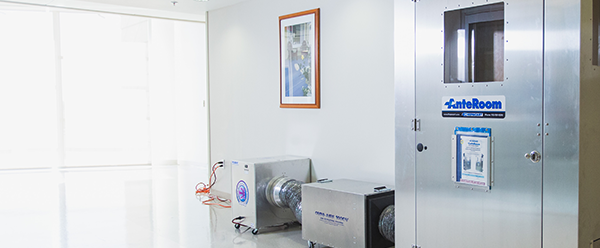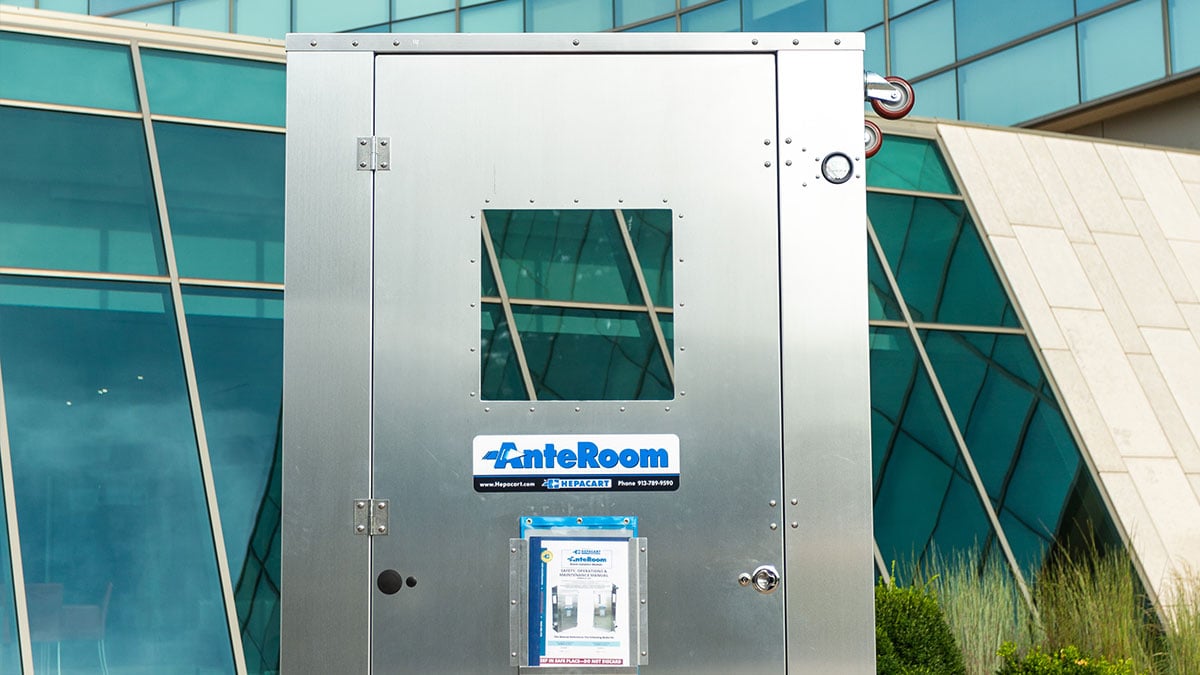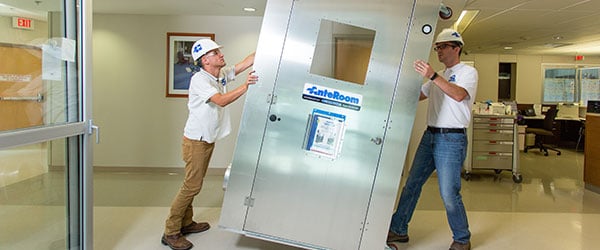
The importance of having the right tools for infection control should always be on the forefront of everyone’s mind when working within a healthcare facility. With over 210,000 deaths attributed to hospital-acquired infections (HAIs) each year, there is a consistent need for effective technology and new innovations for infection control and disease prevention.
We at HEPACART® are dedicated to continually improving the tools we use in hospital and healthcare facility construction and maintenance. One of these tools is our award-winning HEPACART® AnteRoom. This AnteRoom is easy to install, cost-effective, and incredibly efficient. But what exactly is an AnteRoom? Let’s clear up any confusion.

Definition of an AnteRoom
The most basic definition of an anteroom refers to a small room that is entered before a larger room. For example, the mudroom in a house or the waiting room in a doctor’s office could be considered “anterooms” as they’re spaces entered before the main, larger space.
Specifically in hospital practices, an AnteRoom is defined as a small room between areas of contamination and treatment areas. Contamination could be dust and debris from construction or maintenance or airborne pathogens from a dangerous illness.
AnteRooms are a sealed space with air filtration to remove harmful particles or pathogens from the air. They also give workers and providers a space to safely remove contaminated items before returning to non-contaminated spaces. Separating contaminated and non-contaminated areas in a hospital is essential to prevent the spread of disease and HAIs.

At HEPACART®, we get a little more specific. We define an AnteRoom as a HEPA-filtered, negative air chamber to isolate workspace from patient space. This complete definition fits with our high standards for infection control.
Why AnteRooms are Important in Hospitals
AnteRooms protect patients from harmful debris and airborne pathogens. They’re most often used during construction and maintenance projects and for patient isolation and infection control.
When it comes to construction and maintenance, AnteRooms can prevent the hospital from needing to close down entire wings of the building and having to move patients around. While not every hospital has a major construction project going on at all times, ongoing maintenance creates a need for effective debris control to keep patients safe. AnteRooms also block out noise from work projects and odor pollution from paint, cleaners, and adhesives.
AnteRooms are necessary when hospitals have limited isolation rooms or an emergency isolation situation to protect patients from serious hospital acquired illnesses (HAIs). In these situations, the ability to quickly install an AnteRoom is vital to patient safety.

For more information about what exact uses AnteRooms can have in hospitals, check out our blog, 3 Uses for a Healthcare AnteRoom.
Different Types of AnteRooms
There are two main kinds of hospital AnteRooms: drywall vestibules (fixed AnteRoom) and portable AnteRooms (HEPACART® AnteRoom).
Drywall Vestibule (Fixed AnteRoom)
This type of AnteRoom is constructed before the beginning of a project and is generally made from raw materials (drywall, lumber) or plastic sheeting that cannot be reused when the project is over.
Portable AnteRoom
As the name implies, portable AnteRooms are reusable and can be moved from place to place. HEPACART® AnteRooms are easy to install, and can be set up in a matter of minutes.
A portable AnteRoom has several benefits, the first of which is their environmental sustainability. Unlike raw materials, portable AnteRooms can be used again and again, which also makes them a more cost-effective option long term. In addition, alternative materials like plastic sheeting have a negative impact on the environment, while a portable AnteRoom doesn’t create so much waste.
A fixed AnteRoom takes a lot of time and labor to install, and the drywall and lumber that is used for materials isn’t going to be as effective at containment as a HEPACART® AnteRoom. In fact, soft surfaces like curtains, sheets, and plastic sheeting can actually trap pathogens on them and spread bacteria and dust around a healthcare facility.
There are a lot of benefits to using any kind of AnteRoom, but HEPACART® AnteRooms in particular provide additional advantages because they are reusable — which is good for both the environment and your budget — and extremely effective at reducing the spread of HAIs and preventable disease in hospital and healthcare facility settings.
To learn more about AnteRooms, download our complete guide from the link below.

You can get to know our AnteRoom equipment here.
